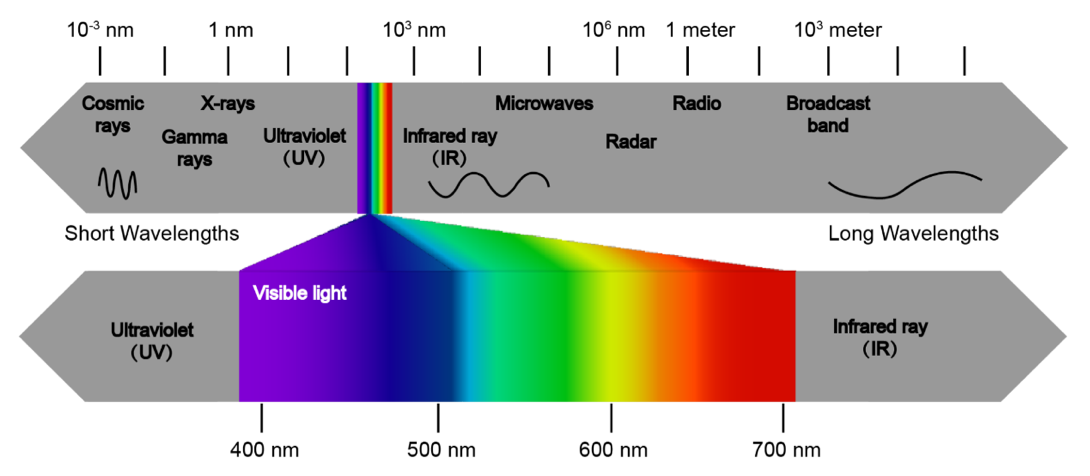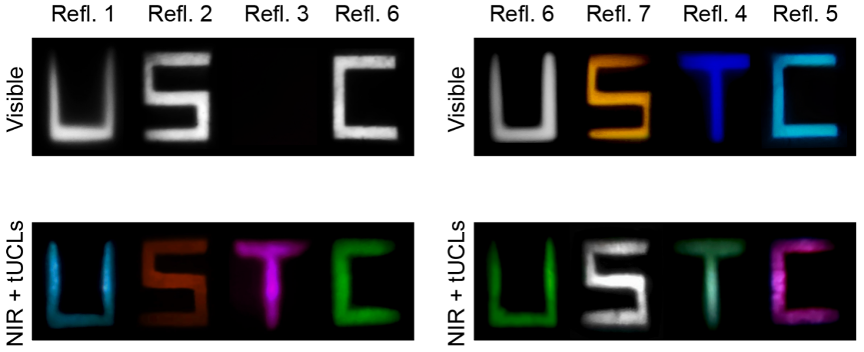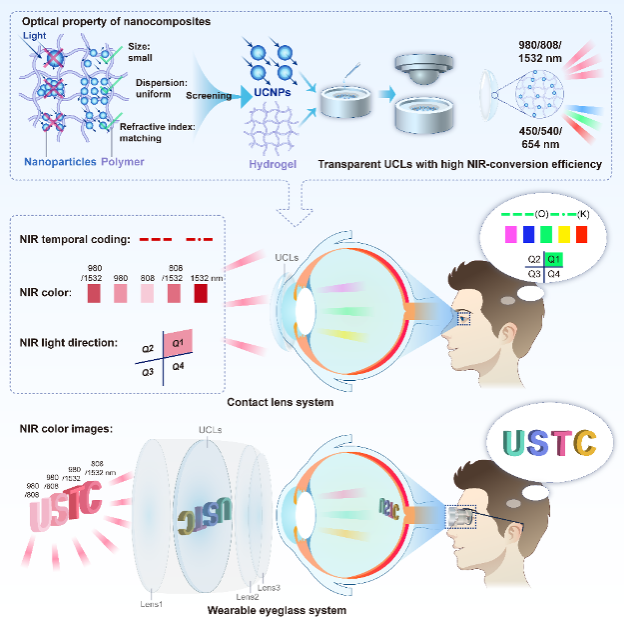A research team led by Prof. XUE Tian and Prof. MA Yuqian from the University of Science and Technology of China (USTC), in collaboration with multiple research groups, has successfully enabled human near-infrared (NIR) spatiotemporal color vision through upconversion contact lenses (UCLs). The study was published online in Cell on May 22, 2025 (EST), and was featured in a News release by Cell Press.
In nature, electromagnetic waves span a wide range of wavelengths, but the human eye can perceive only a narrow portion known as visible light, making NIR light beyond the red end of the spectrum invisible to us.

Fig1. Electromagnetic waves and visible light spectrum (Image from Prof. XUE’s team)
In 2019, a team led by Prof. XUE Tian, MA Yuqian, and HAN Gang achieved a breakthrough by injecting upconversion nanomaterials into the retinas of animals, enabling the first-ever naked-eye NIR image vision capability in mammals. However, due to the limited applicability of intravitreal injection in humans, the key challenge for this technology lies in enabling human perception of NIR light through non-invasive means.
Soft transparent contact lenses made of polymer composites provide a wearable solution, but developing UCLs faces two main challenges: achieving efficient upconversion capability, which requires high upconversion nanoparticles (UCNPs) doping, and maintaining high transparency. However, incorporating nanoparticles into polymers alters their optical properties, making it difficult to balance high concentration with optical clarity.
Through surface modification of UCNPs and screening of refractive-index-matched polymeric materials, researchers developed UCLs achieving 7–9% UCNP integration while maintaining over 90% transparency in the visible spectrum. Furthermore, UCLs demonstrated satisfactory optical performance, hydrophilicity, and biocompatibility, with experimental results showing that both murine models and human wearers could not only detect NIR light but also differentiate its temporal frequencies.
More impressively, the research team designed a wearable eyeglass system integrated with UCLs and optimized optical imaging to overcome the limitation that conventional UCLs only provide users with a coarse perception of NIR images. This advancement enables users to perceive NIR images with spatial resolution comparable to visible light vision, allowing for more accurate recognition of complex NIR patterns.
To further cope with the widespread presence of multispectral NIR light in natural environments, researchers replaced traditional UCNPs with trichromatic UCNPs to develop trichromatic upconversion contact lenses (tUCLs), which enabled users to distinguish three distinct NIR wavelengths and perceive a broader NIR color spectrum. By integrating color, temporal, and spatial information, tUCLs allowed for precise recognition of multi-dimensional NIR-encoded data, offering improved spectral selectivity and anti-interference capabilities.

Fig2. The color appearance of various patterns (simulated reflective mirrors with different reflection spectra) under visible and NIR illumination, as viewed through the wearable eyeglass system integrated with tUCLs. (Image from Prof. XUE’s team)

Fig3. UCLs enable human perception of NIR light in temporal, spatial, and chromatic dimensions. (Image from Prof. XUE’s team)
This study, which demonstrated a wearable solution for NIR vision in humans through UCLs, provided a proof of concept for NIR color vision and opened up promising applications in security, anti-counterfeiting, and the treatment of color vision deficiencies.
Paper link: https://doi.org/10.1016/j.cell.2025.04.019
(Written by XU Yehong, SHEN Xinyi, Edited by ZHAO Zheqian, USTC News Center)